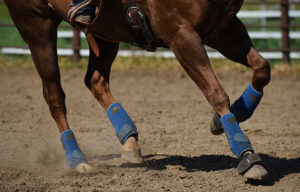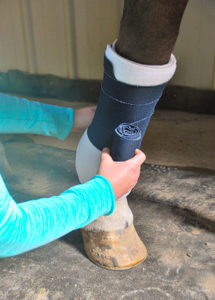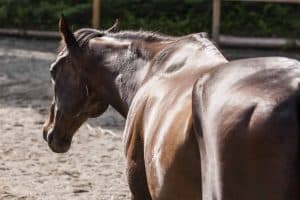Skin Problems in Horses: The Creeping Crud
- Topics: Article
Dealing with skin problems, unfortunately, is part of having a horse. Since skin is the largest organ of the body, it's no wonder there's much that can go wrong. Designed to safeguard internal organs from external forces and to help maintain consistent temperature, water, and nutrient levels, the skin is an integral part of a horse's health. The dermis (or the supportive structure for the skin) contains the nerve endings, blood vessels, and epidermally derived structures, hair follicles, and sweat glands. The epidermis is a living structure of cells that constantly renews itself. It produces the outermost layer of dry, dead, hardened cells that form the ultimate barrier between animal and environment. Disruptions in this barrier result from a number of causes. In this article, several veterinarians will help you understand and better care for your horse's skin and the problems it encounters.
Clyde Johnson, VMD, alumnus from the University of Pennsylvania, offers some invaluable insights based on his 40 years of equine practice. "Due to its sensitivity, the skin can be easily disturbed," he states. "In fact, many things can upset its fragile balance–from dirty bedding to sunburn–resulting in a variety of conditions that may be particularly frustrating to diagnose, and until the situation is resolved, difficult to treat."
Fairfield Bain, DVM, MS, Dipl. ACVIM, ACVECC, ACVP, in an article published in Equine Disease Quarterly (April 2001), says it is important to identify the types of lesions observed. The most common include:
-
Papule–a solid skin elevation;
-
Pustule–a skin elevation with an inflamed base that contains pus;
-
Vesicle–a membranous and usually fluid-filled pouch;
-
Bulla–an elevation containing watery fluid;
-
Wheal–a flat, burning, or itching lesion;
-
Macule–a patch of discolored skin; and
-
Nodule–an abnormal, knobby protrusion.
He adds, "The pattern or distribution of skin lesions is helpful in determining a cause. Certain hypersensitivity reactions to insects might involve the mane and tail region, whereas nodules resulting from allergic collagenolytic granulomas (firm bumps or nodules under the skin) are most commonly found on the chest wall just below the elbow
Create a free account with TheHorse.com to view this content.
TheHorse.com is home to thousands of free articles about horse health care. In order to access some of our exclusive free content, you must be signed into TheHorse.com.
Start your free account today!
Already have an account?
and continue reading.
Written by:
Toby Raymond
Related Articles
Stay on top of the most recent Horse Health news with















